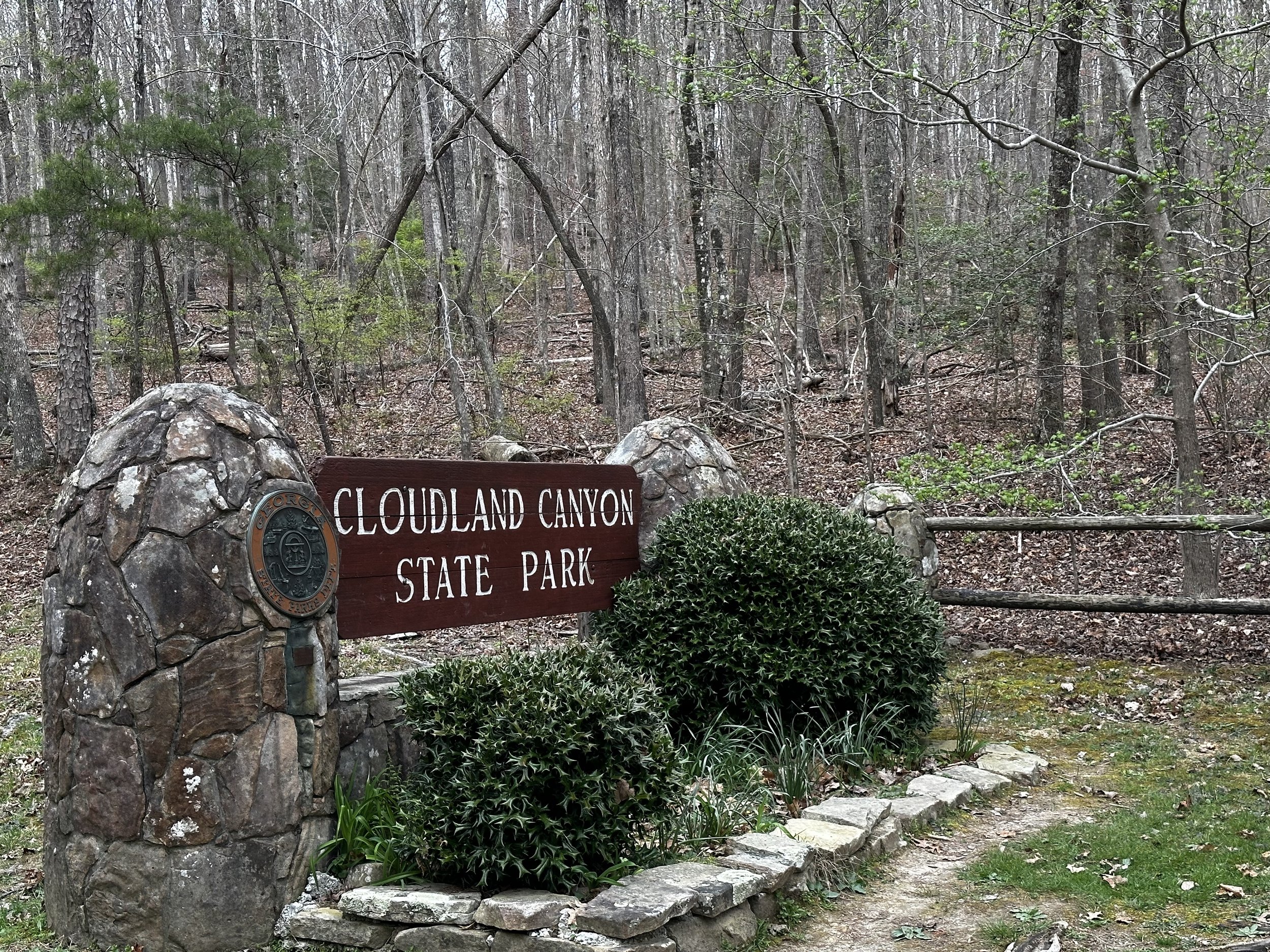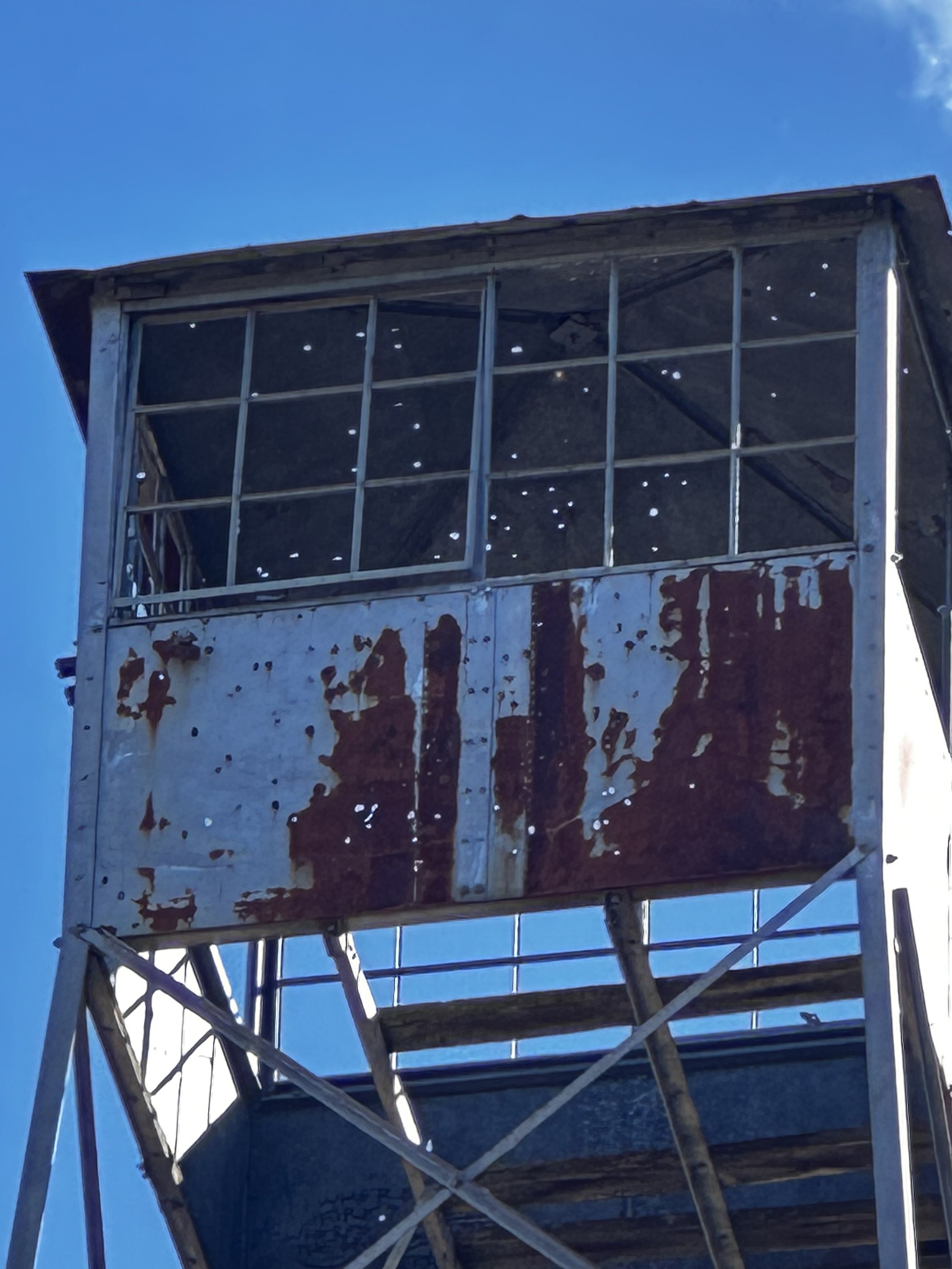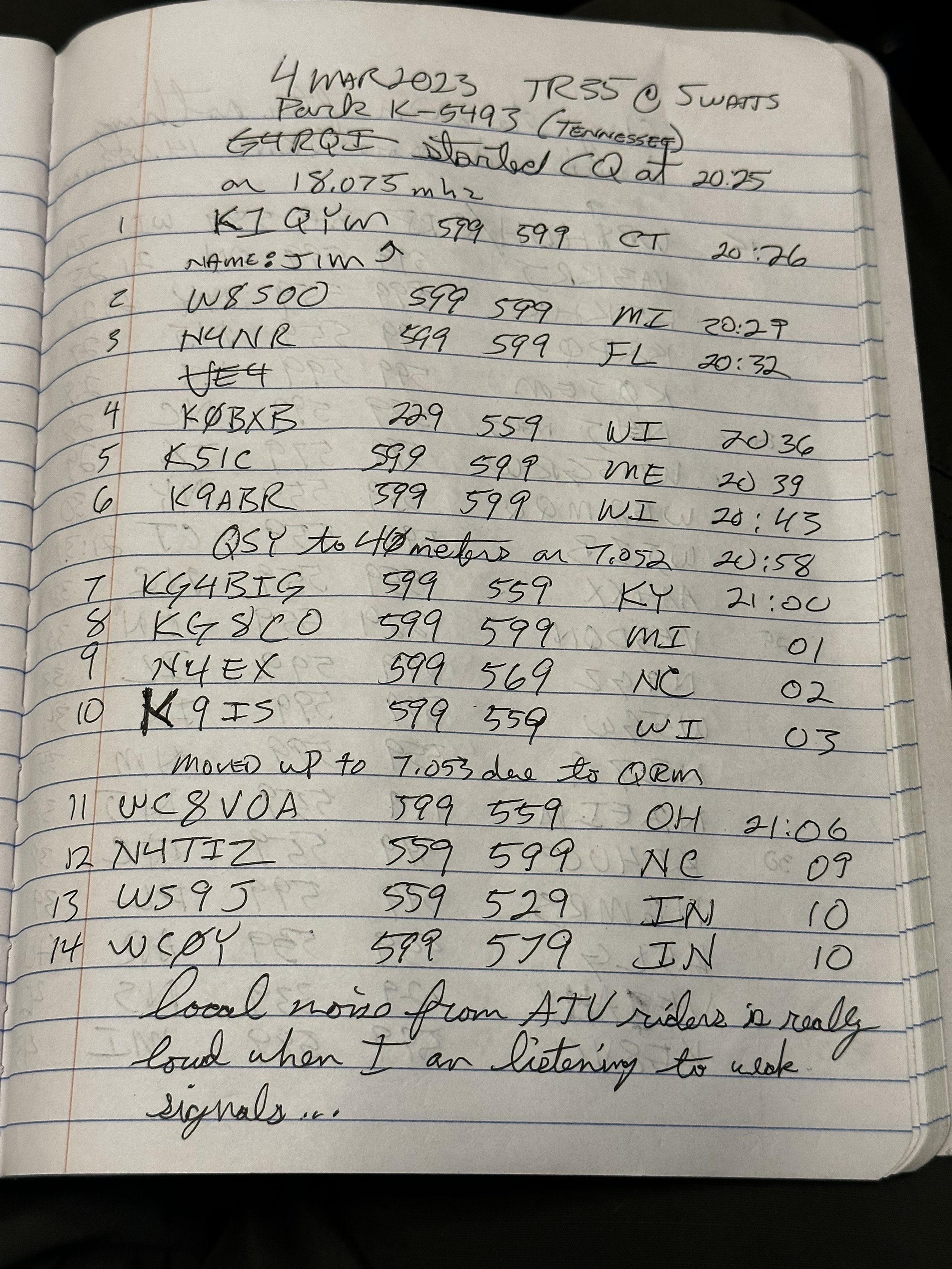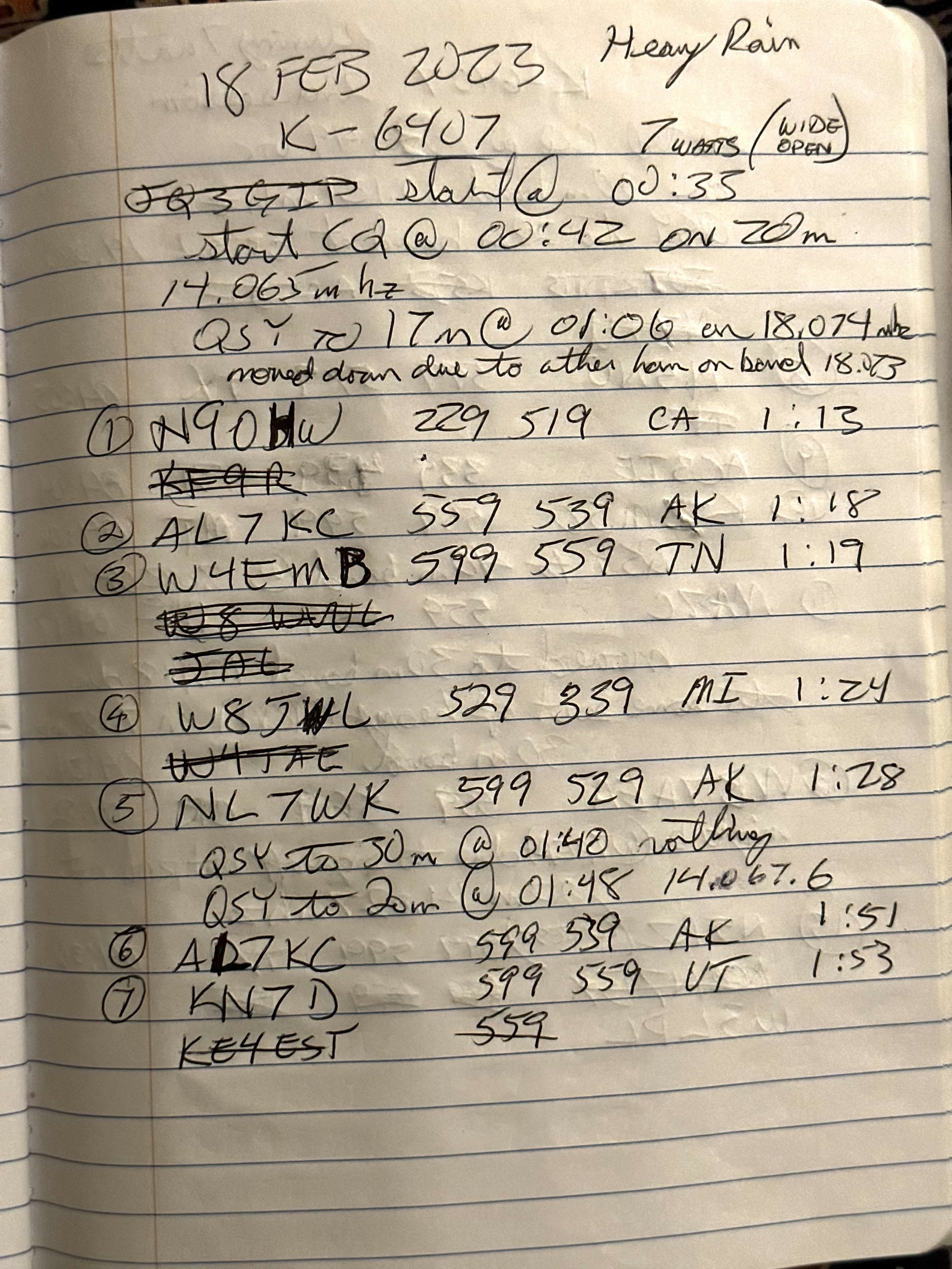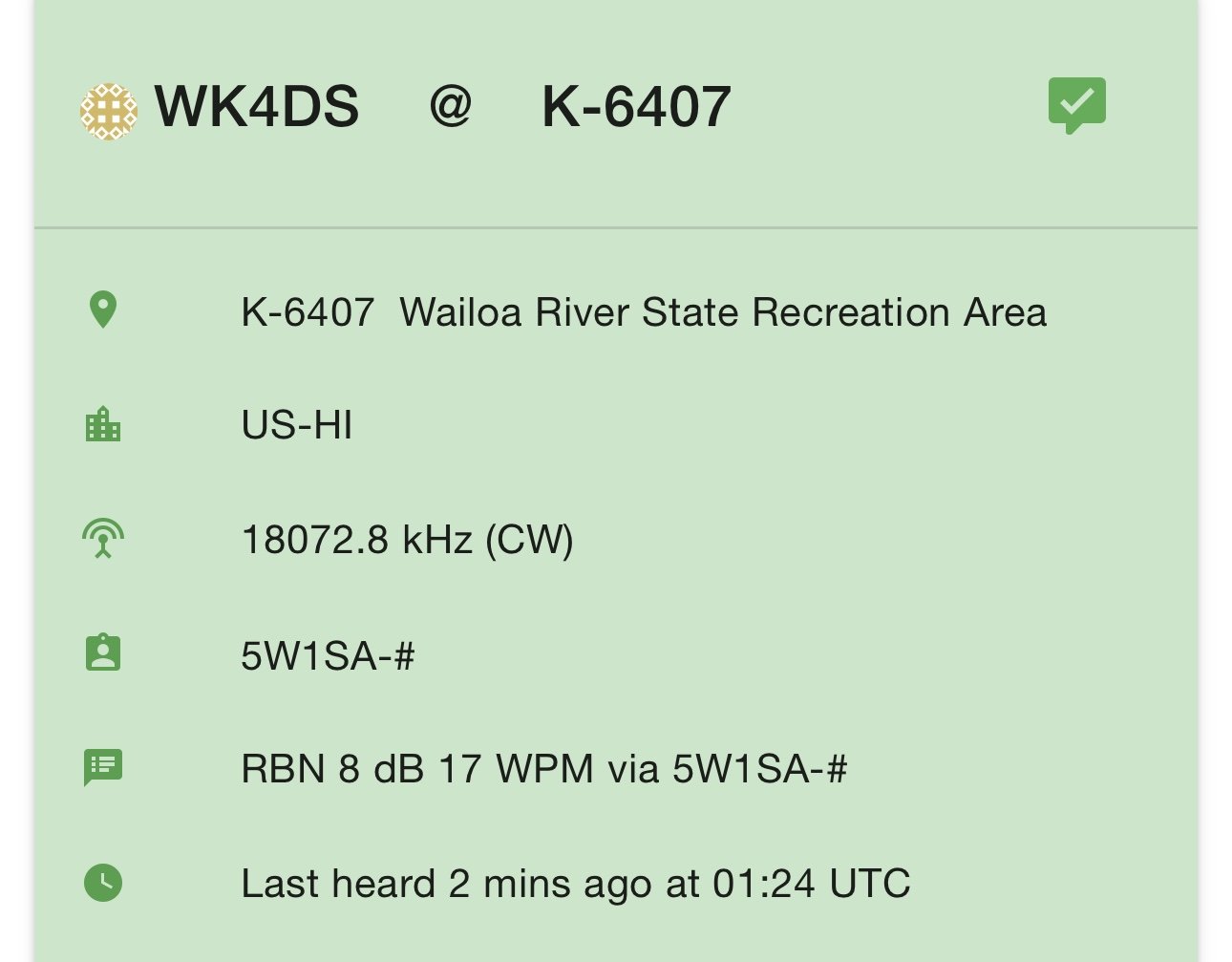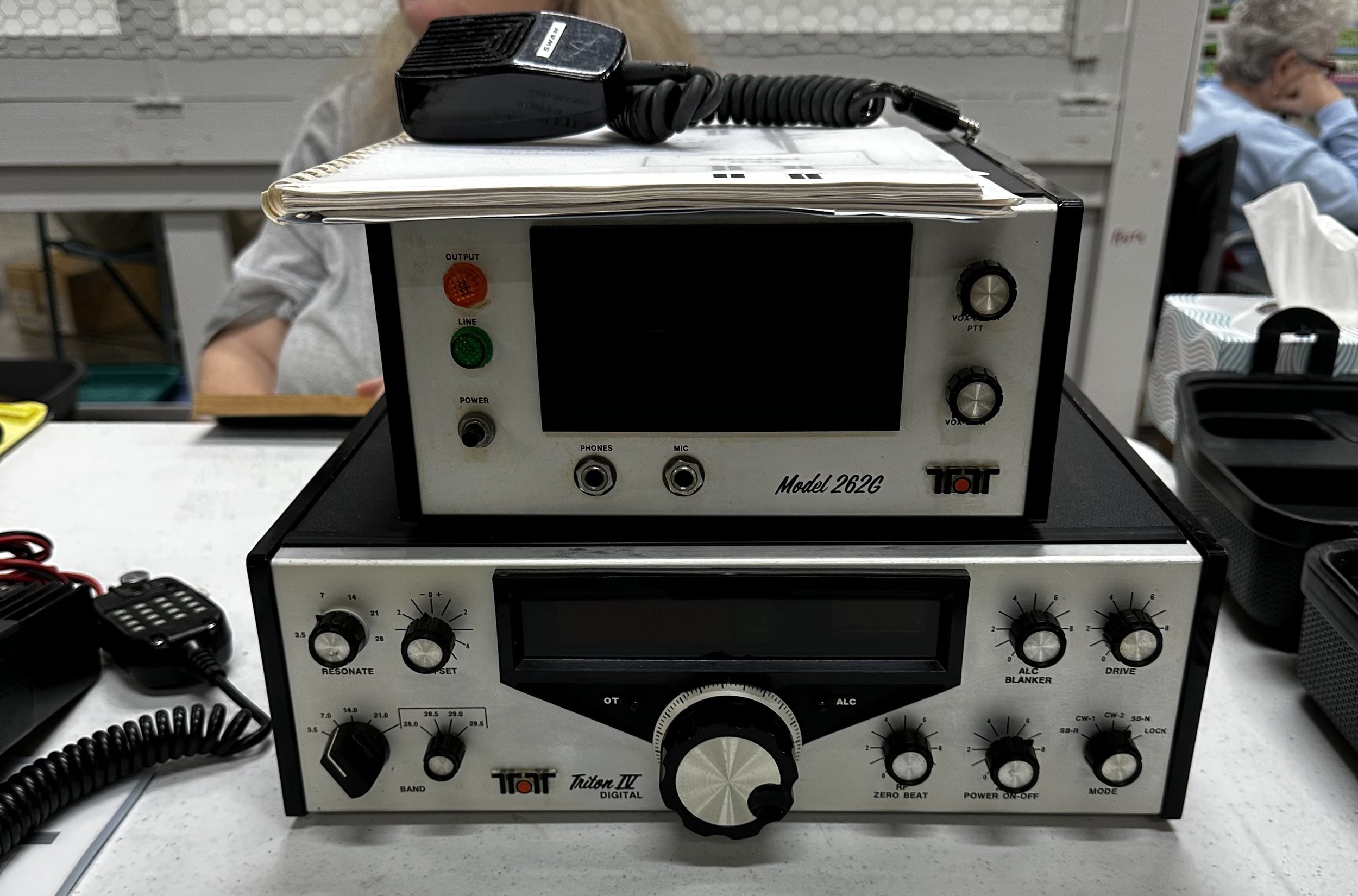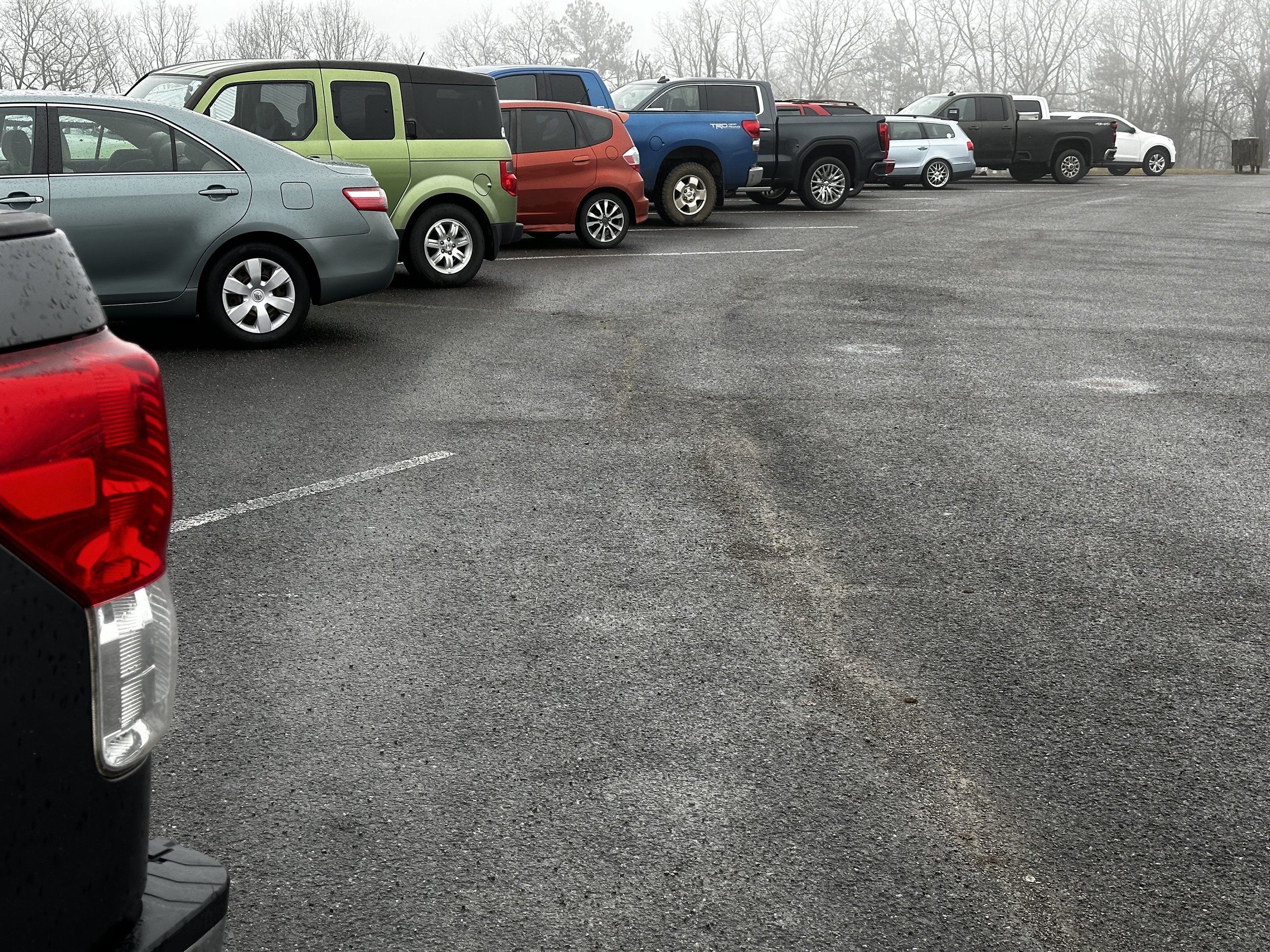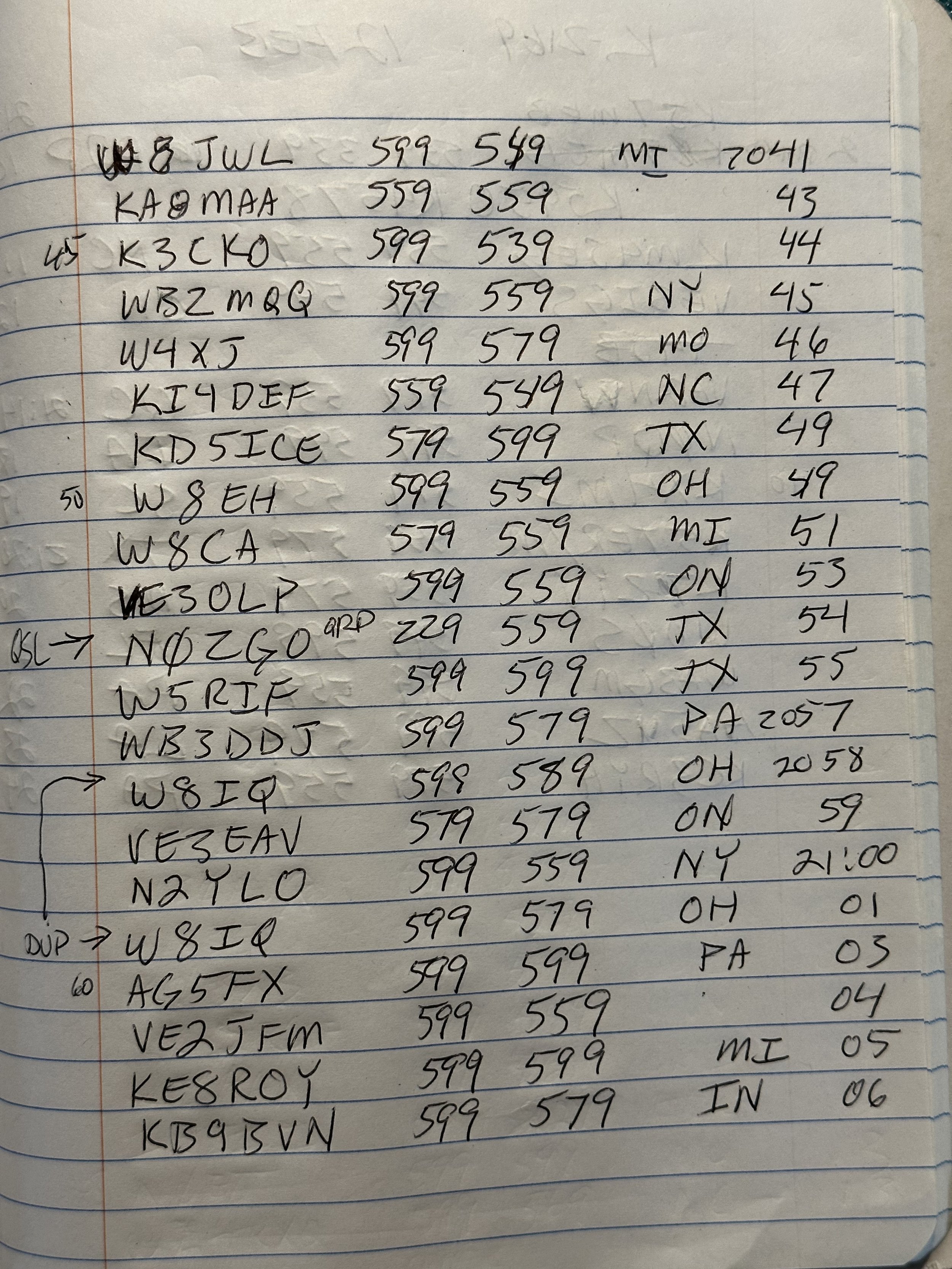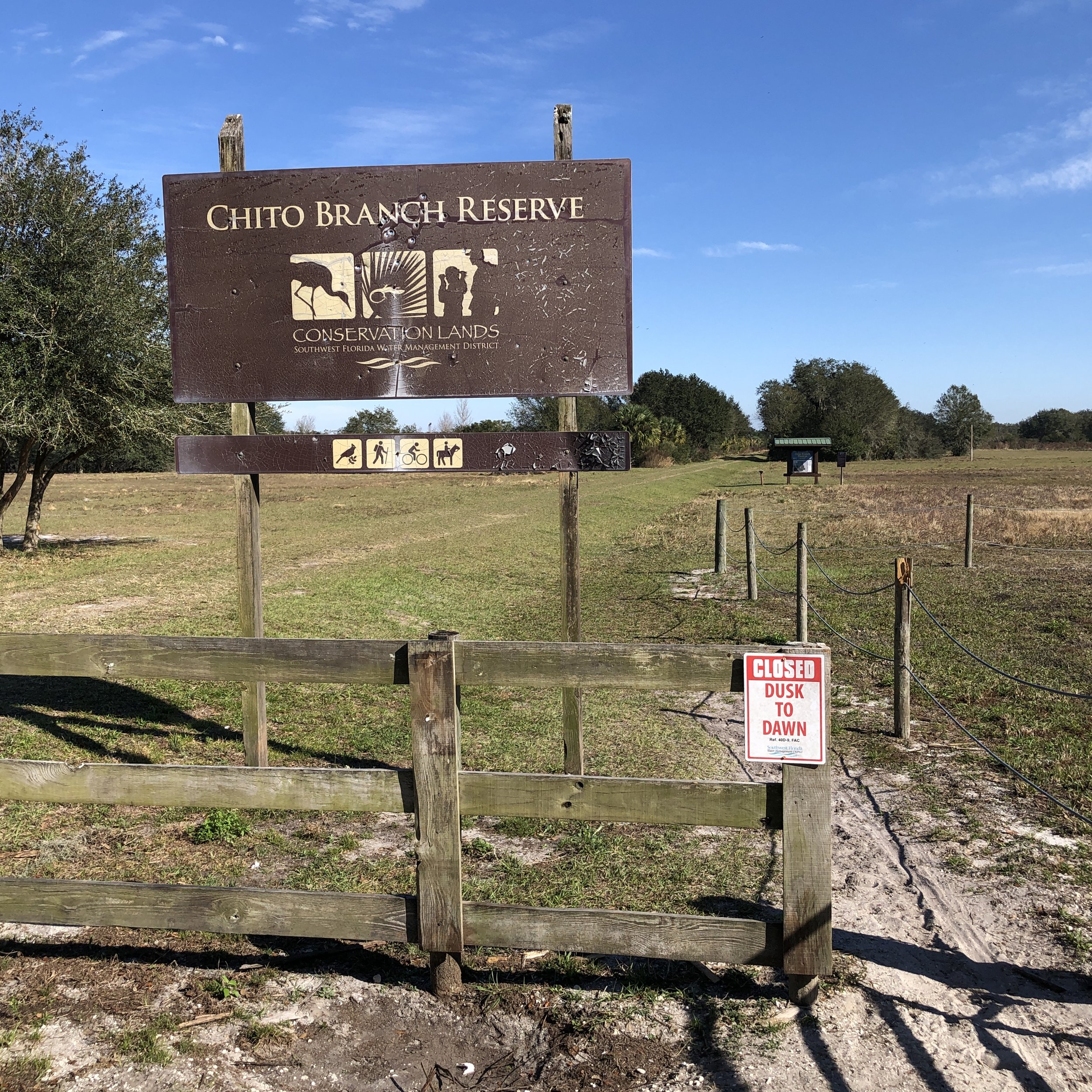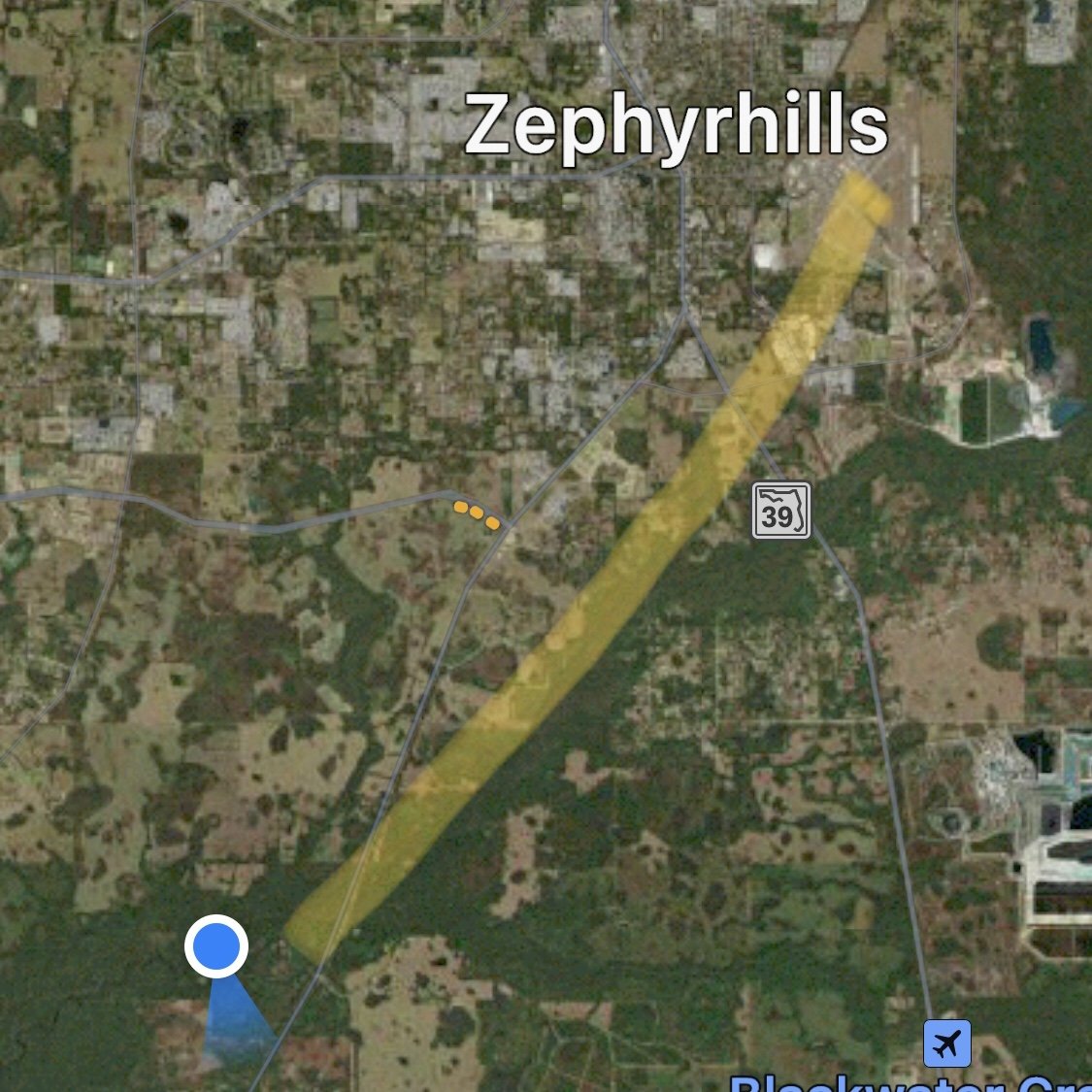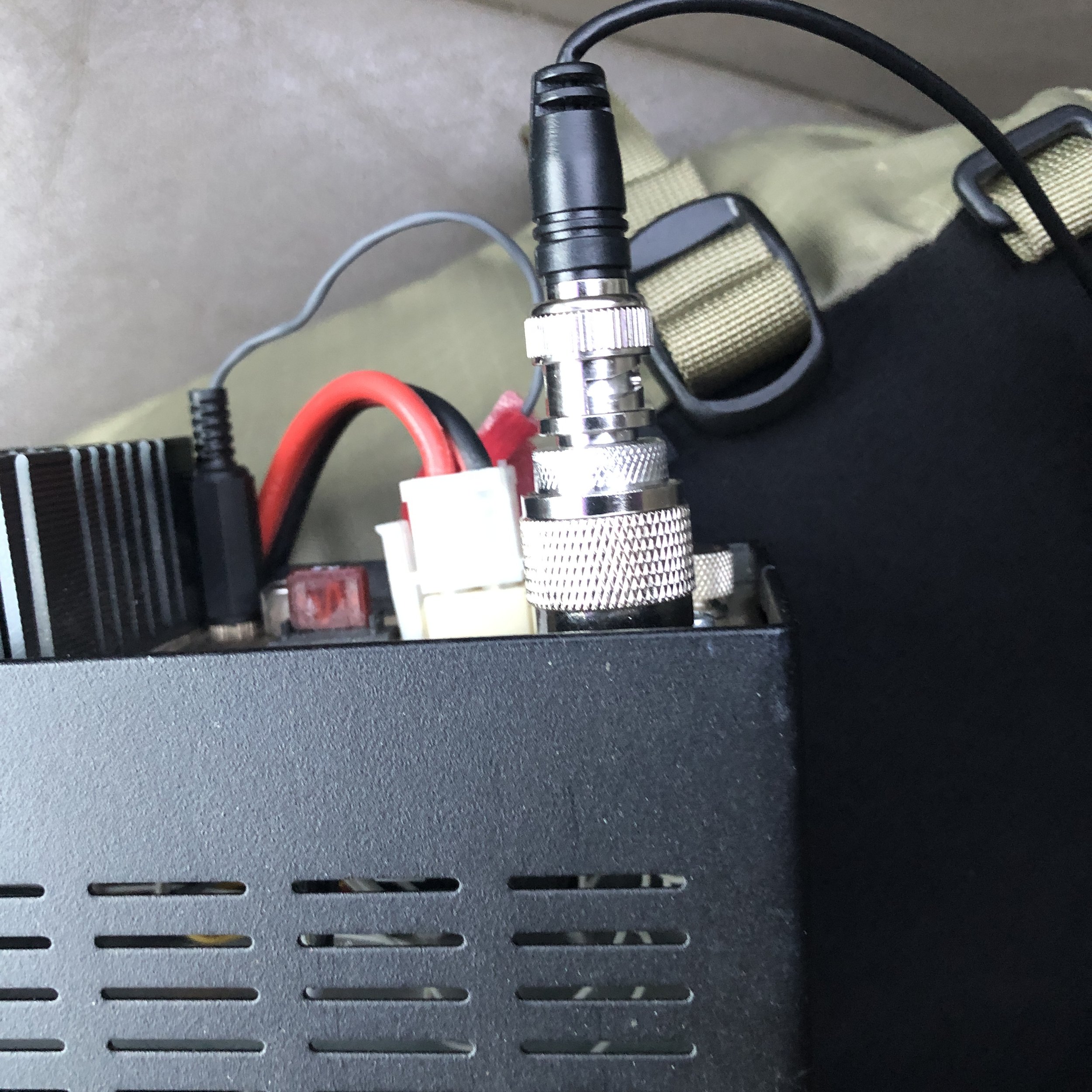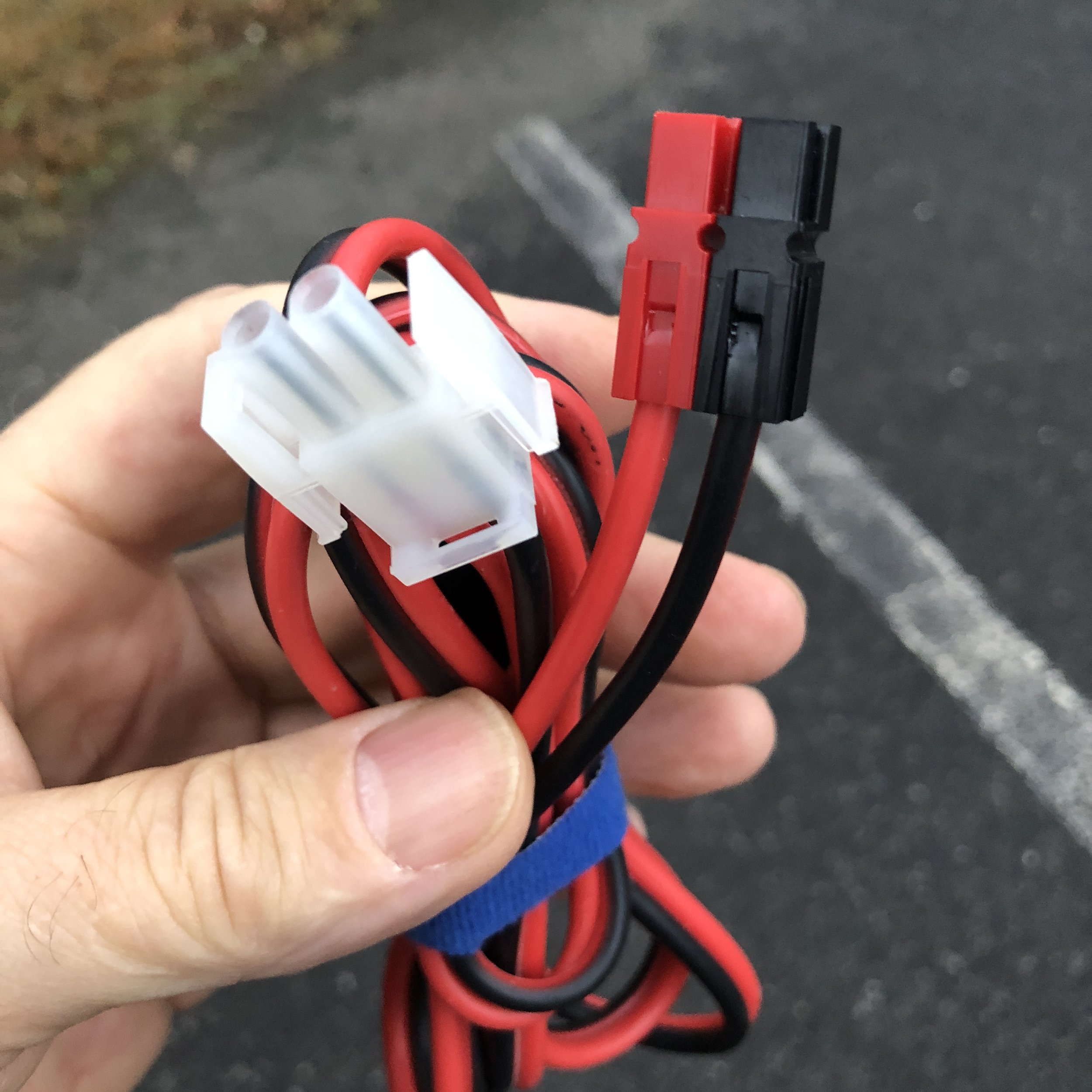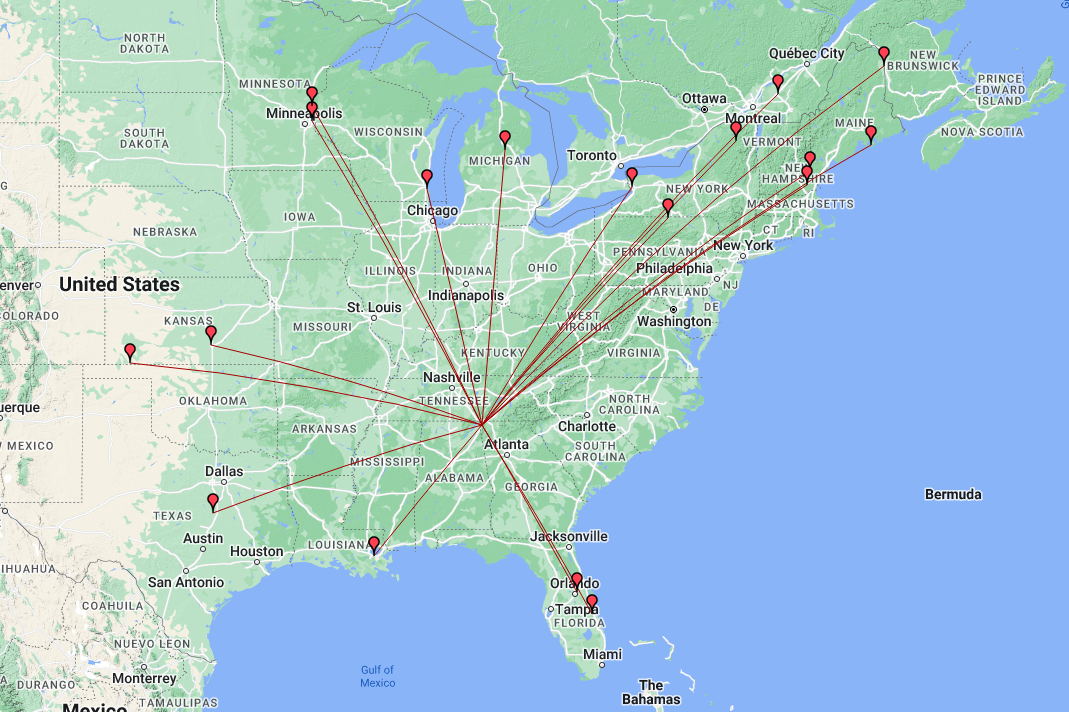What happens when you plan to do something “right quick”? That’s right, it doesn’t happen like that at all. Haha.
I had about an hour of free time today between activities with the XYL and K-2169 was … technically… on the way to meet her, so LET’S POTA!
K-2169 Cloudland Canyon State Park is a 15 minute drive from my house so if you look at that park on the POTA site, you will find I go there a lot. Today, I wanted to get setup quicker than normal, which means I opted for the lower parking lot. This parking area is next to the canyon proper and is where I like to setup my wire antennas in the warmer months.
The lower lot was pretty sparse so I was able to get in a corner, out of the way, which also afforded me the ability to use the side of the truck to shade me from the setting sun. I grabbed a camp chair out of the back of the truck, threw up the 17m hamstick and got on the air. The truck tire made the perfect “table” for the Penntek TR-35 QRP radio too. I used the battery to tie down the coax so it would not slide off the truck and pile up on me (like it did right before I sat the battery on it) and made the station nice and tidy.
I started on 17m calling CQ as I heard quite a few stations having QSOs. After calling CQ for a few minutes I got an answer from NA7C in Utah and then a little later KJ7DT came in strong as well from Idaho. But then I called for a long time with nothing coming back so I decided to change bands and see if I could finish up on 20 meters.
Once on 20 meters, I found a clear spot and started calling CQ again. Just a moment later KJ7DT came back again! This time even stronger!!! Idaho was booming into Georgia today. That gave me hope! So I worked Paul leisurely, as he was the only one to answer my call, and then cleared him to find myself in a ginormous pileup! Where did everybody come from!?!?!? Good Lord I had trouble pulling out single stations. I have never really had to deal with a legit pileup before. Oh sure, I have had 4 or 5 stations call at once but this sounded like 20 or 30! I start plucking out callsigns and in the process of the next 38 minutes I put 38 QSOs in the log. That has to be some sort of a record for me!
Some items of note from today that I found interesting were that I worked KJ7DT back to back on two bands without coordinating that with him, then I ended up working three DX stations today with one of those being DL1AX in Germany, another was VO1SW in Canada and finally CU3DI in the Azores! I even worked a Park to Park for a 2Fer! Sweet! Speaking of sweet, the dogwood trees are in full bloom as well making for a beautiful scene on top of a 40 QSO run on my tiny little QRP radio in just under an hour and that includes an antenna change!
Check out the QSO map I got from the HAMRS app showing the spread. Side note about HAMRS, if the op isn’t found in the Hamdb database, then search them on QRZ and get their grid square and add it to the QSO info if you want them to show up on the QSO map. This is how I get non-POTA ops to show up.
Here is the USA map without the tags so you can see the radiation dispersion of my 5 watts and a hamstick antenna.
I think that I could have most likely worked most of these ops today with SSB and it would have been successful. 20 meters was that strong today. This comes on the heels of the previous evening where I worked Ian in New Zealand on 10 meters via greyline! This has been a good 24 hours for radio! Confirmed via QRZ in real time no less! I am sending him a real QSL card anyway but that always gets me excited. It isn’t everyday that I can even hear New Zealand on 10 meters much less them hear me.
Here is another tidbit about me. If at all possible, I will always clear the pileup before going QRT as I know some of them are needing my park for one of their goals and if I can help them with their goal, whatever it might be, I want to do that. I had not initially planned on staying for an hour but it was so rewarding that I just couldn’t power down the rig. Lol
Today was a pleasant surprise and I look forward to more like it in the future.
72 and I hope to hear you on the radio!
de WK4DS

